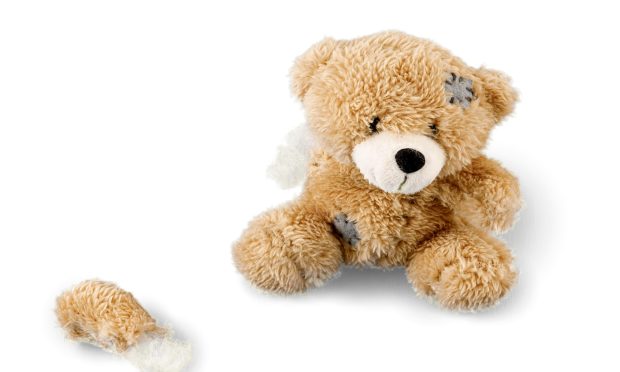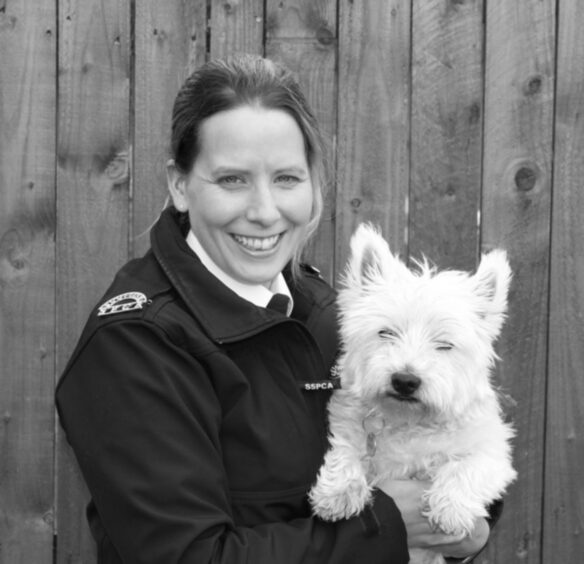
Children as young as three are harming and sometimes killing animals as concerns mount over childhood exposure to animal abuse in the home and online.
The Scottish Society for Prevention of Cruelty to Animals today revealed that increased referrals involving minors has led it to expand its pioneering Animal Guardians programme, designed to help stop the cruelty and break the link between animal abuse in childhood and crimes against humans in later life.
Launched by the SSPCA in 2018, it was originally aimed at seven to 12-year-olds but has now been extended to cater for children aged three to 16.
Gilly Mendes Ferreira – SSPCA director of innovation and strategic relations and co-founder of the Animal Guardians rehabilitation scheme – told The Sunday Post its officers were involved in a case of a four-year-old who killed his pet kittens.
The revelation comes hard on the heels of national news reports of children filming themselves killing and torturing wild animals in grisly WhatsApp videos in a sickening UK-wide trend.
Animal Guardians
The reports focused on 500 youths across 11 groups, including primary school children, who shared graphic photos and videos of wounded and dead animals killed using a hand-held catapult.
Swans, deer, pigeons, foxes, squirrels, pheasants, rabbits, geese, and ducks are among the wildlife pictured and filmed in the attacks.
The SSPCA director revealed: “The young boy, aged four, was reported to have harmed two kittens resulting in their deaths. The referral came from a social worker.
“The kittens were killed on separate occasions and there were immediate concerns for other kittens in the house, which were removed.” She said the child had been struggling with domestic violence, parental separation and trauma.
“By the end of the programme, his behaviour around animals improved and he could talk about their feelings,” she said. “He has not come back on our radar as of yet, which is positive.”
But, she revealed: “Over 57% of referrals are for young people aged between five and 10 years old.”
Some were unintentional acts linked to improper handling, but, she said: “Physical harm is more reported than other types and the predominant species are dogs, the second are cats. We have had sad cases where animals have been killed, particularly a young animal that has been thrown against the wall in temper.
“Something we are seeing now is the link to the online world. It’s a growing area we are concerned about because young people are watching so much online, and there is animal abuse footage there.
“We had an animal fighting case just before Christmas where a gamekeeper filmed animal fights,” she said, referring to 23-year-old Aberdeenshire man Ryan Martin.
“He was given a five-year ban on owning or keeping animals and a 175-hour community service order, but he had shared numerous images of severely injured dogs killing badgers and foxes on Snapchat and TikTok. Throughout the clips he could be heard encouraging the dogs to attack the animals. We are worried that young people see this violence as a form of entertainment.”
Links to offenses against humans
Experts say there is evidence to suggest such exposure could lead them to commit similar acts which in turn might escalate to offences against humans in adulthood.
Ferreira said: “The Jamie Bulger murder and the Dunblane school shooting are examples where there was a background of animal cruelty.”
Merseyside 10-year-olds Robert Thompson and Jon Venables were documented as having pulled the heads off live birds before their horrific abduction, torture, and murder of two-year-old Jamie Bulger in February 1993.
Thomas Hamilton enjoyed shooting animals and squashing rabbits’ heads beneath car wheels as a youth and went on, in March 1996, to massacre 16 children and their teacher at Dunblane Primary School.
The SSPCA provided information in the case of Kevin Vivers, 58, who at the High Court in Edinburgh in February was given a life sentence and ordered to serve a minimum of 10 years after being convicted of 27 crimes, including nine rape charges, seven assaults, four sexual assaults and five of animal cruelty.
Vivers’ crimes in West Lothian and Stirlingshire spanned from 1985 until 2021. His first episode of animal cruelty was in 1985 when he was 19. In the same year he attacked the first of his seven female victims. He later killed two dogs by shooting one and slitting the throat of the other.
Ferreira welcomed laws like the UN Convention on the Rights of the Child which states children must be protected from all forms of physical and psychological violence and exposure to violence, such as domestic violence or violence inflicted on animals, and the late addition to the Online Safety Act (2023).
It makes it illegal to depict real or realistic serious violence against an animal, or depict the real or realistic serious injury of an animal in graphic detail. It is also an offence to realistically depict serious violence against a fictional creature or the serious injury of a fictional creature in graphic detail.
Referrals
Animal Guardians – which followed the SSPCA’s First Strike campaign set up in 1998 to highlight the link between domestic violence and animal abuse – has, since inception, received 425 referrals with 242 youngsters taking part in the programme.
Ferreira said: “We have had children as young as three years old take part. No one is born programmed to automatically harm animals. Animal abuse is a societal issue, and we need people to recognise and talk about it more. When a child harms an animal, often people’s immediate reaction is that the child is trouble, and, in some cases, is immediately classed as being beyond help. But if you label someone an animal killer what chance do they have to rehabilitate and move on?”
Animal Guardians can’t provide psychological intervention but advises on appropriate and safe animal handling and the emotions of animals – helping children to develop empathy and a connection with them.
She said: “Animal Guardians is a positive programme. Young people who haven’t had a great start in their life can often identify with an animal who hasn’t had a great start, for example if an animal has been abandoned and the child feels abandoned. The child sees the animal as ‘like me’.
“It helps the children to have a connection with the animal and that’s what helps to make the programme work. We know from research with Edinburgh University that they can see animals as their friends.
“You can change the young person, but you also need to make changes in the family households. Some come from chaotic family households, and it is difficult to educate the adults. The way children treat animals is often learned behaviour.
“Now we are looking at what other support we can put in place and if the families will accept that support. The next step is the cultural shift trying to get members of the family interested and engaged.”

Enjoy the convenience of having The Sunday Post delivered as a digital ePaper straight to your smartphone, tablet or computer.
Subscribe for only £5.49 a month and enjoy all the benefits of the printed paper as a digital replica.
Subscribe